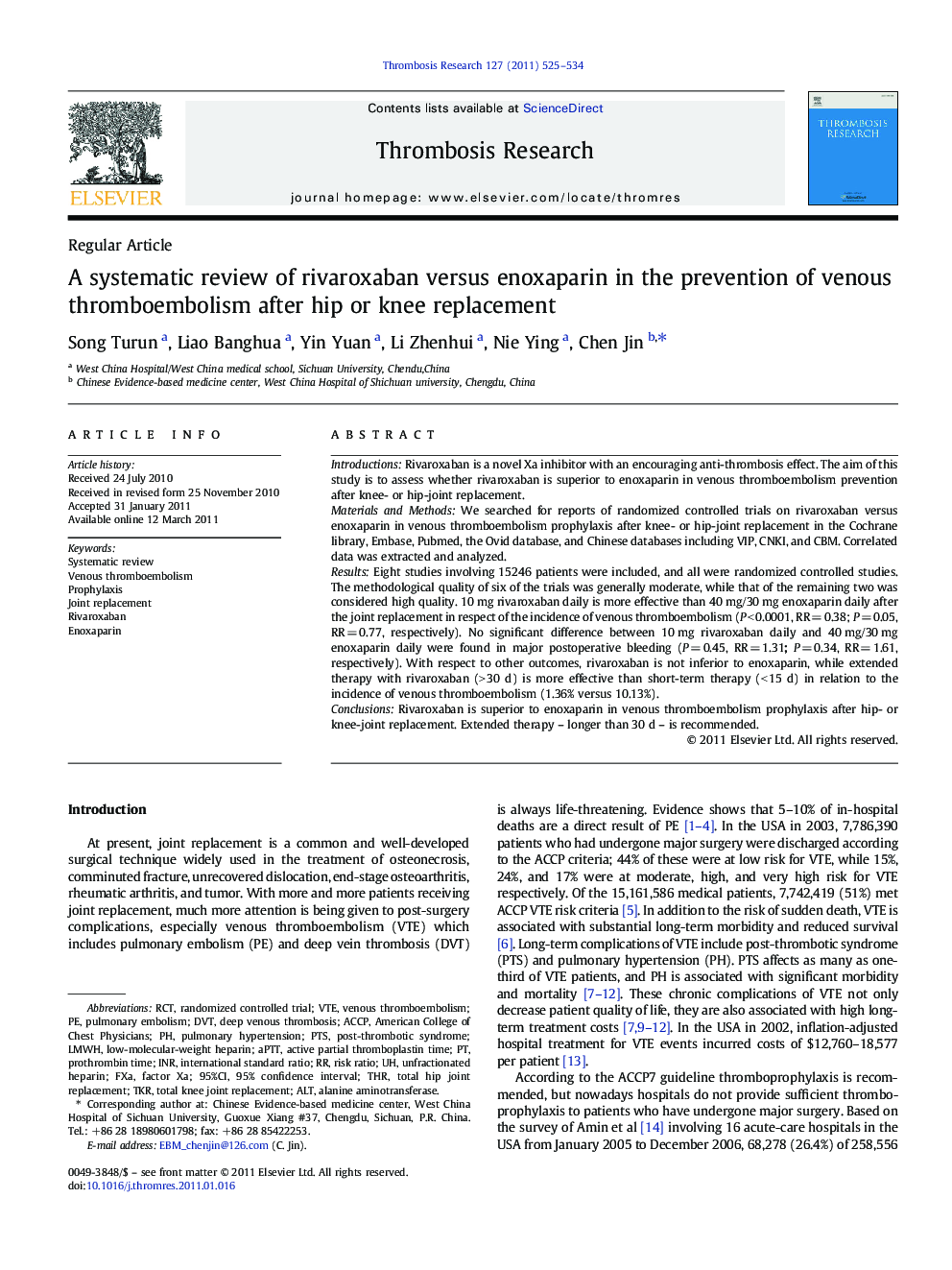| Article ID | Journal | Published Year | Pages | File Type |
|---|---|---|---|---|
| 3028847 | Thrombosis Research | 2011 | 10 Pages |
IntroductionsRivaroxaban is a novel Xa inhibitor with an encouraging anti-thrombosis effect. The aim of this study is to assess whether rivaroxaban is superior to enoxaparin in venous thromboembolism prevention after knee- or hip-joint replacement.Materials and MethodsWe searched for reports of randomized controlled trials on rivaroxaban versus enoxaparin in venous thromboembolism prophylaxis after knee- or hip-joint replacement in the Cochrane library, Embase, Pubmed, the Ovid database, and Chinese databases including VIP, CNKI, and CBM. Correlated data was extracted and analyzed.ResultsEight studies involving 15246 patients were included, and all were randomized controlled studies. The methodological quality of six of the trials was generally moderate, while that of the remaining two was considered high quality. 10 mg rivaroxaban daily is more effective than 40 mg/30 mg enoxaparin daily after the joint replacement in respect of the incidence of venous thromboembolism (P < 0.0001, RR = 0.38; P = 0.05, RR = 0.77, respectively). No significant difference between 10 mg rivaroxaban daily and 40 mg/30 mg enoxaparin daily were found in major postoperative bleeding (P = 0.45, RR = 1.31;P = 0.34, RR = 1.61, respectively). With respect to other outcomes, rivaroxaban is not inferior to enoxaparin, while extended therapy with rivaroxaban (> 30 d) is more effective than short-term therapy (< 15 d) in relation to the incidence of venous thromboembolism (1.36% versus 10.13%).ConclusionsRivaroxaban is superior to enoxaparin in venous thromboembolism prophylaxis after hip- or knee-joint replacement. Extended therapy – longer than 30 d – is recommended.
